Public Space Manual for the Brussels Capital Region
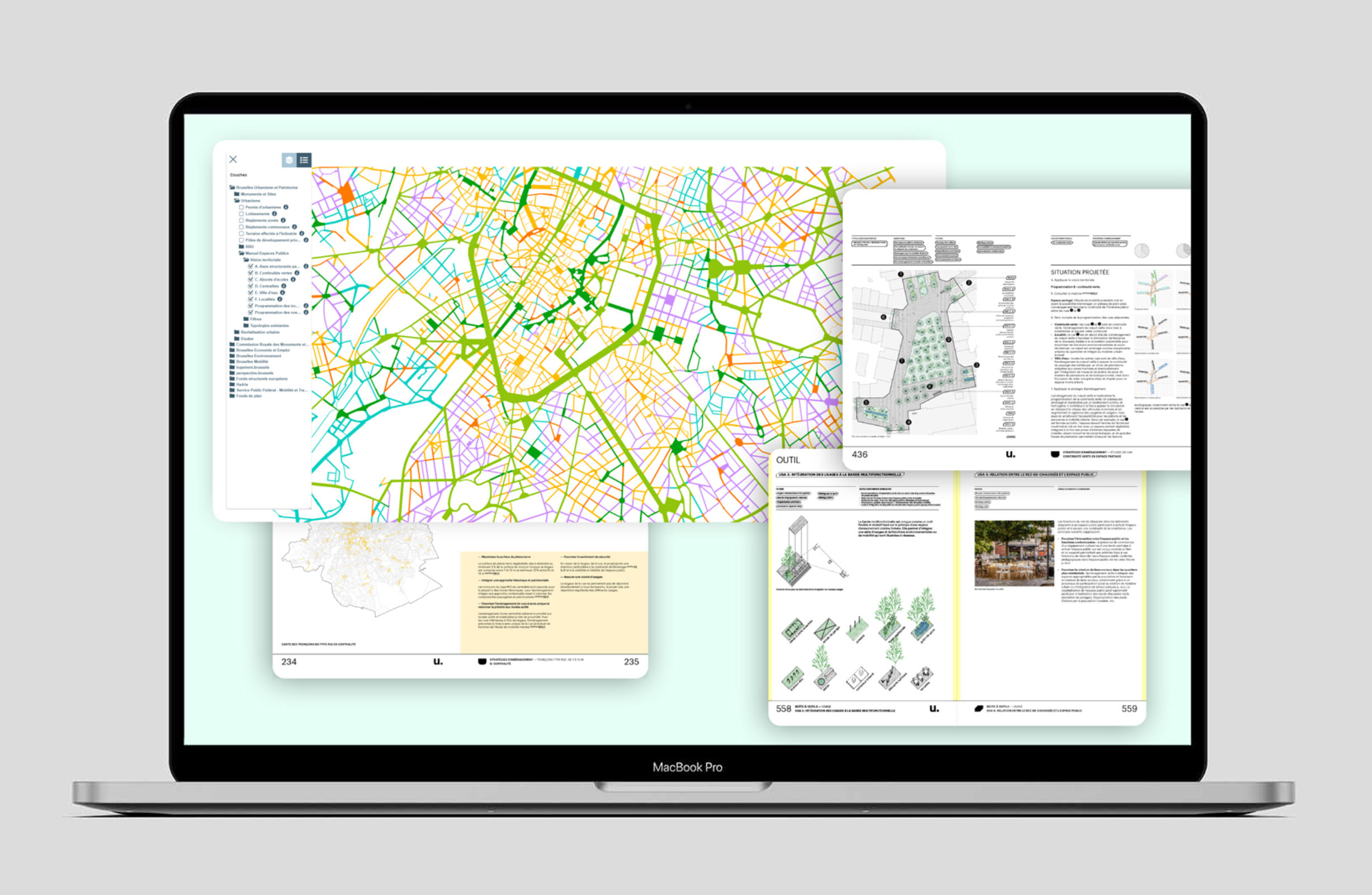
A coherent vision
In the Brussels Capital Region, numerous guidelines, standards, and plans exist for public space. Our goal was to develop a coherent, shared vision for the whole of this diverse territory, one that addresses contemporary urban challenges, and integrates existing resources while providing concrete solutions for designing public spaces.
The manual emerged from a collective effort led by urban.brussels, with project leaders ORG and Bureau Bas Smets and contributions from partners Traject, Rotor ASBL-VZW, Common Ground, Plant en Houtgoed and L'architecture qui dégenre ASBL.
ORG approached the work of the Public Space Manual through three main questions:
- How can well-designed public space make cities more pleasant, inclusive and accessible?
- How can we enhance urban resilience to climate change?
- How can we better share public space and accommodate active modes of transport?
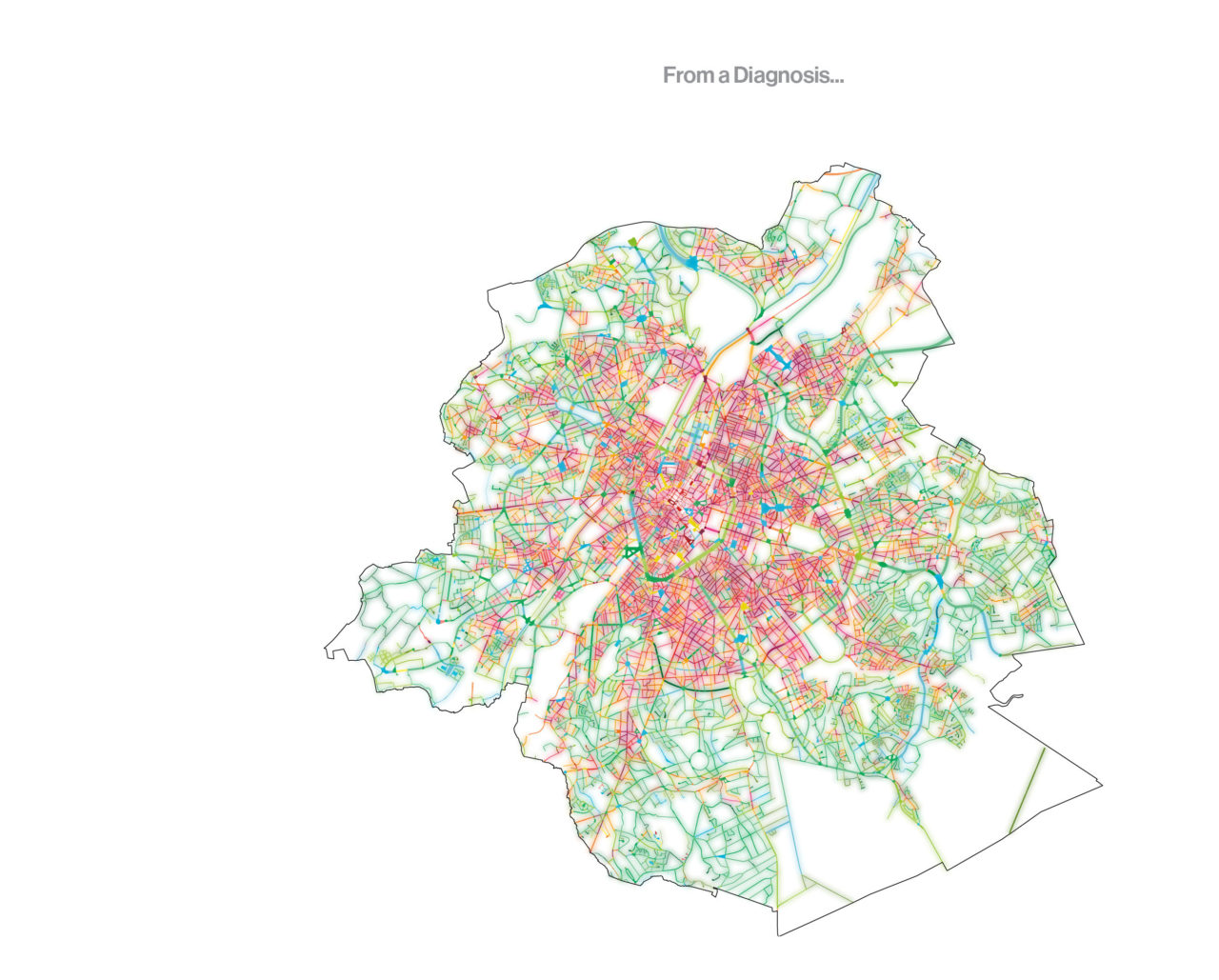
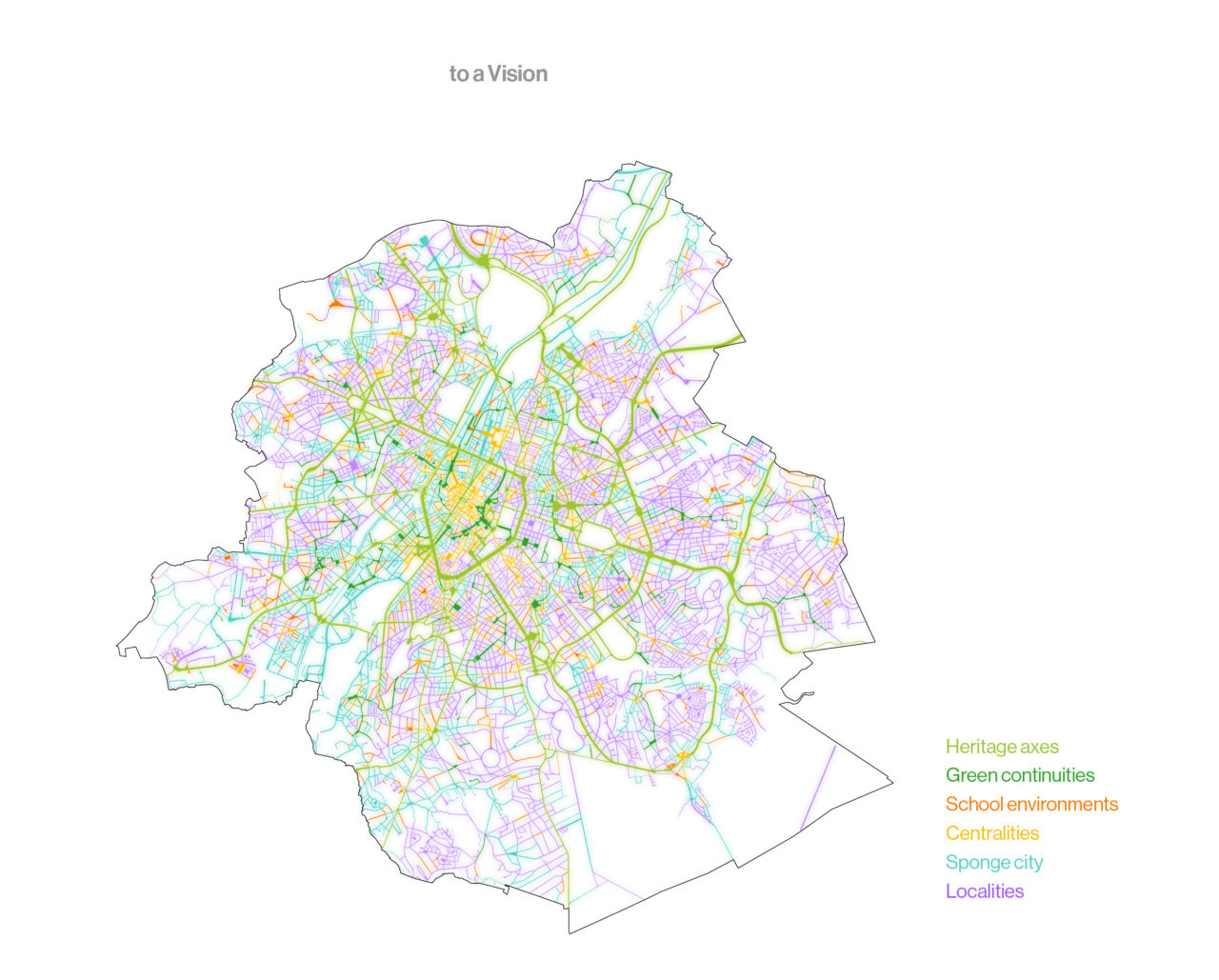
To create the Manual, 167 existing norms, regulations, plans, strategies and policies for Brussels Capital Region public space planning have been synthesized and linked into 20 overarching ambitions that are grouped into five themes within the Manual: Environment, Materiality, Mobility, Identity, and Use.
Each theme offers a distinct perspective, helping to develop and integrate various aspects into public space development. Together, these ambitions form the foundational theory of the Manual.
The Manual also maps 18 filters of known and existing spatial constraints or ambitions.
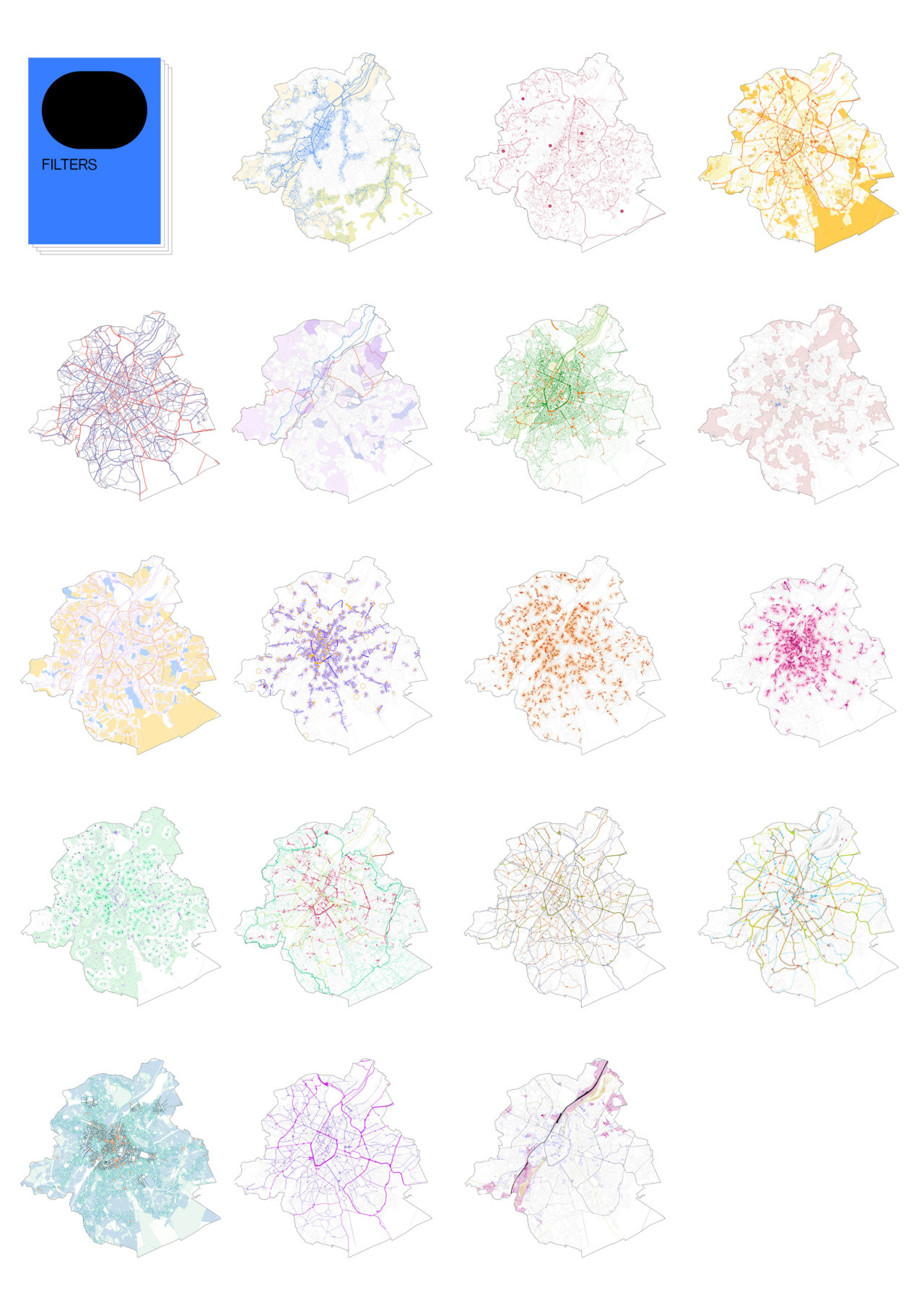
From this position it proposes 6 determining programming strategies for all future public spaces across the Region, clarifying which challenges are predominant where, to guide future redesigns that achieve ambitions at the macro and local levels.
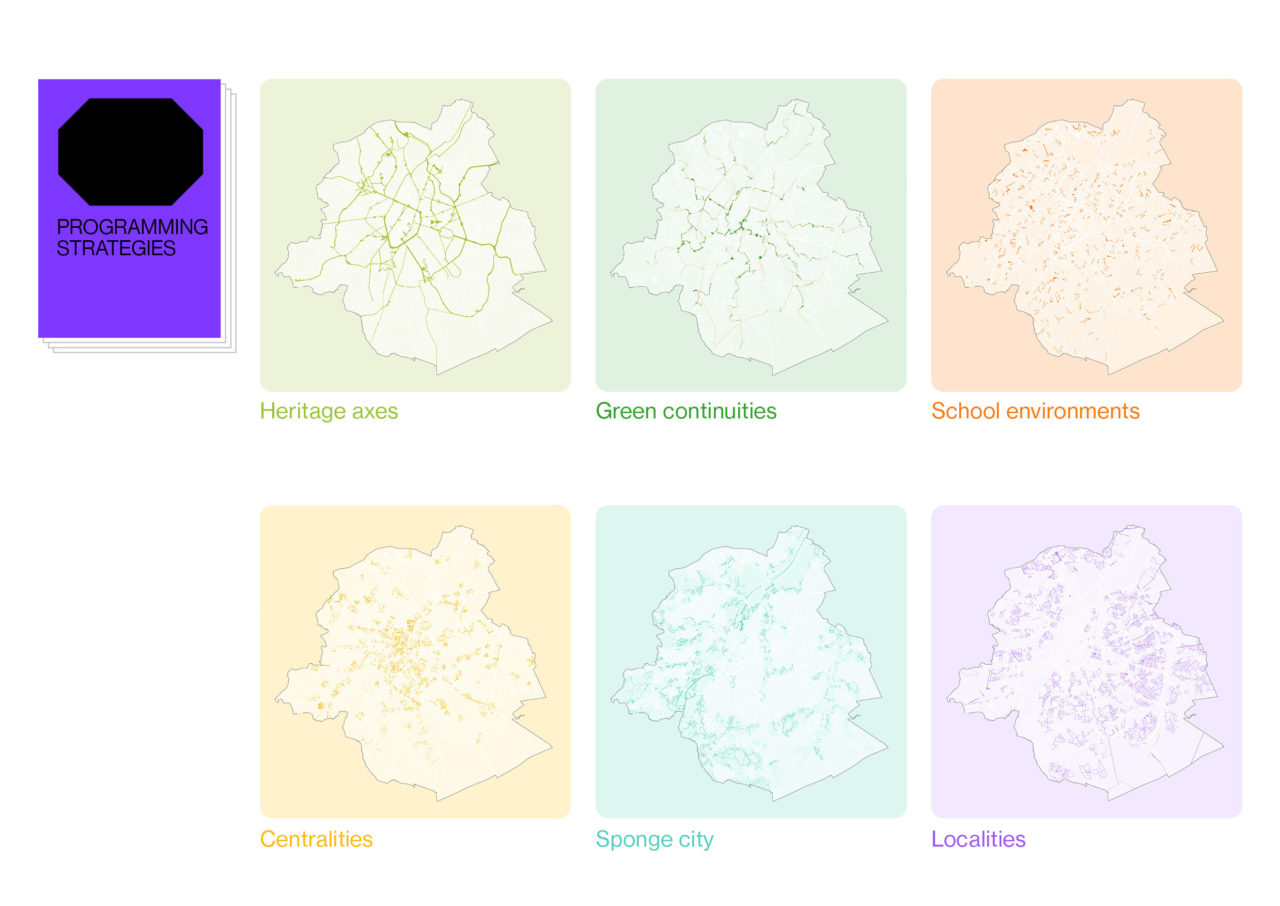
For each typology of public space types, those programming strategies are translated into concrete design strategies, further illustrated by case studies.
A toolbox completes the Manual with 71 tools offering a range of advice, from defining ideal processes to dimensioning or creating a planting matrix.
To use and navigate the manual easily, ORG developed an interactive webtool enabling users to get a tailored answer of what are the possibilities for a specific area. This webtool was made possible by fully integrating advanced GIS analytics into the Manual and it will evolve overtime to integrate the new policies and ambitions of the Region.
The Public Space Manual for the Brussels Capital Region does not attempt to set out specific methods or projects per se. Rather, it outlines goals and strategies for doing so, recognizing that each project is unique and must be tailored to the site's particularities, uses, commission, program, and various constraints. Its 600+ pages reflect the complexity of designing qualitative public spaces, the ideas and recommendations it contains aim to inspire future projects for public spaces that enrich urban life and leave a positive legacy for years to come.
Location
Brussels, Belgium
Year
2022
Program
Public Space
Collaborators
Bureau Bas Smets, Traject, Rotor, Common Ground, Plant en Houtgoed
Team
Natalie Seys, Luk Peeters, Alexander D’Hooghe, Marcel Smets, Yannick Vanhaelen, Rime Abbad El Andaloussi, Sanne Claeys
Clients
Brussels Capital Region, urban.brussels




